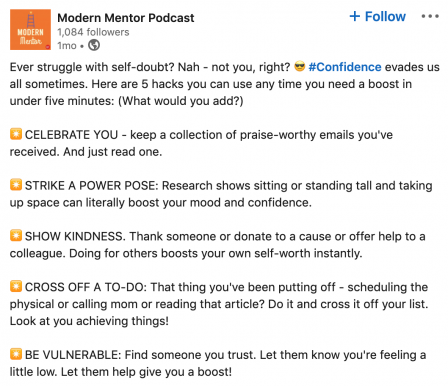
Charles Darwin once said: “It is not the strongest of the species that survive, nor the most intelligent, but the one most responsive to change.” Adaptability is what allows us to renew and grow. And I’m excited for today's special episode, because it’s one that heralds renewal and growth for the Savvy Psychologist podcast.
As you may have heard from last week’s episode, this will be my last time hosting the show. I’ve treasured my two years at the Savvy Psychologist, sharing my passion (and hopefully some wisdom) with you. I’ve learned so much in the process, not the least from your thoughtful questions and feedback. And for this, I am very grateful!
I’m also grateful for my special guest today, who will be your next Savvy Psychologist, because her incredible personal and professional experiences will make this show go deeper than it’s ever gone before.
Dr. Monica Johnson is a clinical psychologist and owner of Kind Mind Psychology, a private practice in NYC that specializes in evidenced-based approaches to treating a wide range of mental health issues (e.g. depression, anxiety, trauma, and personality disorders). Additionally, she has a focus on working with marginalized groups of people including BIPOC, LGBTQ+, and alternative lifestyles. She has co-authored a book for professionals on addressing race-based stress in therapy, and regularly speaks and teaches on this subject. She currently lives in Manhattan where she indulges in horror movies, sarcasm, and intentional introversion.
Dr. Johnson and I sat down to an interview about her path as a psychologist (and human), her favorite psychological concepts, and her conception of the future of mental health. Below is an abbreviated transcript of our conversation:
Savvy Psychologist: How did you decide to become a psychologist? What drew you to this work?
Dr. Monica Johnson: I decided to become a psychologist when I was 12 years old. It’s well documented in my journals from that time period. I grew up in poverty in the South in a single parent household. I am the only person in my family to even think about going to college. I faced significant obstacles and adversity given my circumstances, but I was also aware that I was resilient. I wasn’t aware of that term at the time, but if you read my journal entry, I spoke about recognizing that I was strong and wanting to impart that strength onto others almost through osmosis. It was important to me that people had the knowledge that they weren't alone and they had...
Keep reading on Quick and Dirty Tips






























 ...
...

